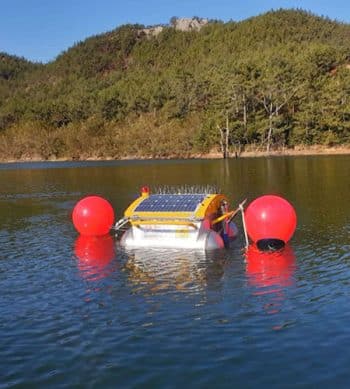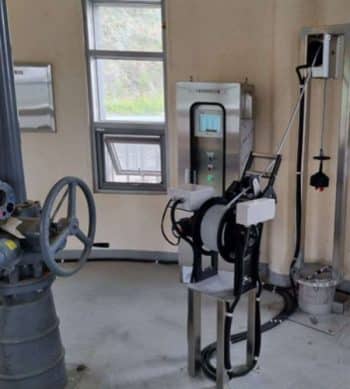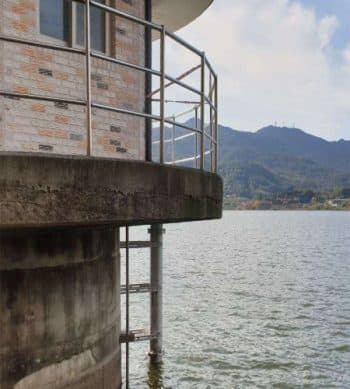October 2022 I South Korean agriculture is generally consisting of rice paddy farming. To secure water resources, numerous reservoirs were built nationwide for this purpose. Today, there are more than 17,000 water reservoirs in Korea. The Korea Rural Community Corporation(Opens in a new tab or window) (KRC) installed a wide network of Water Quality Monitoring Systems (WQMS) in the reservoirs for real-time monitoring of inflow pollutants and algae bloom with approximately 200 stations as a result, including 60 stations located at intake towers and 170 buoy installations.
• 17,000 water reservoirs in Korea
• 900 of 17,000 water reservoirs are managed by KRC
• The others are managed by local Governments
200 stations monitor the water quality of reservoirs and lakes in South Korea
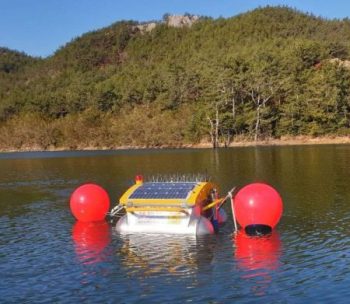
200 stations monitor the water quality of reservoirs and lakes in South Korea
South Korean agriculture is mainly consisting of rice paddy farming, which is consuming a lot of water, whereas climate and topographic features are not naturally built to secure water resources. 61 percent of the annual rainfall occurs during the summer and 70 percent of the country is mountainous terrain with steep slopes.
To secure water resources, numerous reservoirs were built nationwide. Today, there are more than 17,000 reservoirs in Korea. In addition to provide flood and drought protection, the reservoirs are also used as recreational spaces and help to maintain river flow.
The Korea Rural Community Corporation (KRC) installed a wide network of Water Quality Monitoring Systems (WQMS) in the reservoirs for real-time monitoring of inflow pollutants and algae bloom. The project was conducted in collaboration with s::can and other companies. Approximately 200 stations, including 60 stations located at intake towers and 170 buoy installations, have been built since 2020.
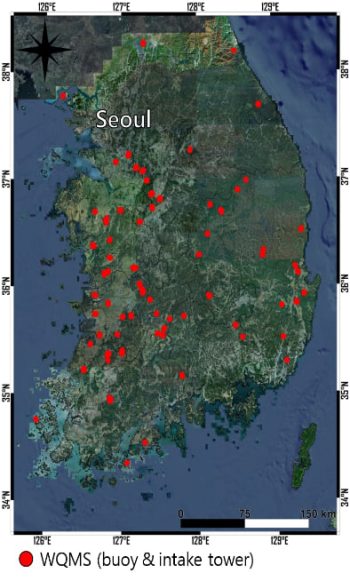
The measured parameters are TSS, NO3-N, TOC and Chl-a. All these parameters are measured with a spectro::lyser V3 sensor. In addition, the ruck::sack (automatic brush) was mounted on the spectro::lyser V3 as a cleaning device and a con::nect V3 is used for power supply.
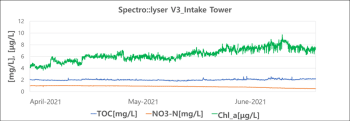
At the intake towers, radar level meters are used to adjust the depth of the sensors manually or automatically 4 times a week to respond to changing water levels.
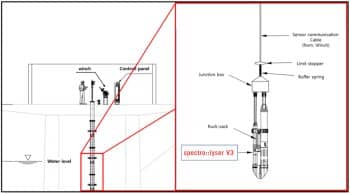
Approximately 1 to 4 buoys are installed per reservoir in its center or its influent so far. The purpose of these pontoons is the monitoring of water quality characteristics, input pathway of point pollution sources (irrespectively if its organic matter or toxic chemicals), nutrient accumulation and algal bloom.
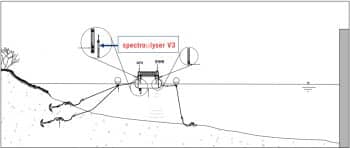
Due to the success of the project so far, it is for that reason planned to extend the measuring network to potentially 700+ reservoirs managed by KRC.
